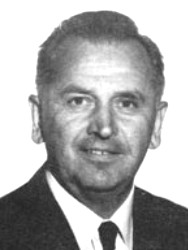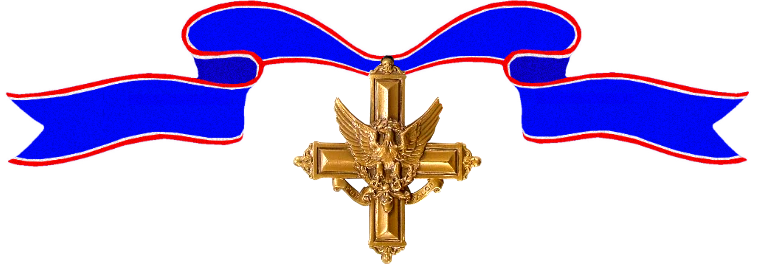Frank Lukas was born Frank Luchowski, but changed his name when he entered military service in World War II. He earned his first Distinguished Service Cross in Korea on September 3 and 4, 1950. Six months later on February 6, 1951, he earned a SECOND Distinguished Service Cross.

–
Cemetery:
Awards Received
-

Distinguished Service Cross
-

Distinguished Service Cross
-
Distinguished Service Cross
Service:
United States ArmyRank:
Captain (Infantry)Batallion:
2d BattalionRegiment:
26th Republic of Korea RegimentDivision:
Military Advisory Group to the Republic of KoreaAction Date:
February 6, 1951
Headquarters, EIGHTH U.S. Army, Korea, General Orders No. 159 (March 21, 1951)The President of the United States of America, under the provisions of the Act of Congress approved July 9, 1918, takes pleasure in presenting a Bronze Oak Leaf Cluster in lieu of a Second Award of the Distinguished Service Cross to Captain (Infantry) Frank W. Lukas, United States Army, for extraordinary heroism in connection with military operations against an armed enemy of the United Nations while serving with the United States Military Advisory Group, Korea, deployed as Advisor to the 2d Battalion, 26th Republic of Korea Regiment. Captain Lukas distinguished himself by extraordinary heroism in action against enemy aggressor forces in the vicinity of Kangnung, Korea, on 6 February 1951. On that date, the 2d Battalion, 26th Republic of Korea Regiment, was given the mission of attacking an estimated three battalions of Korean communist soldiers who had held up the 2d Battalion advance for three days in the vicinity of Mosan Hill, a dominating terrain feature commanding the approaches to Kangnung. Captain Lukas, equipped with a backpack Air Force control radio, advanced with the lead company to attack the enemy. The Company was immediately placed under a heavy barrage of enemy mortar, automatic weapons and small arms fire, during which time the company commander was killed and 15 friendly soldiers wounded. Captain Lukas crawled through the enemy fire to another position within 100 years of the enemy positions, and for two hours while under heavy constant enemy small arms fire, directed devastating air strikes by friendly fighter aircraft. These planes knocked out four machine guns, two mortars, caused 50 enemy casualties and partially disorganized the enemy in the entrenchments. At the completion of the air strikes Captain Lukas again exposed himself to enemy fire, and firing a submachine gun, led the company in assaulting the enemy positions. Inspired by the daring and courage of Captain Lukas, the company assaulted the enemy position so aggressively and effectively with rifles, grenades, and submachine guns that 93 of the enemy were killed, an unknown number wounded, and 16 captured, and the remainder forced to withdraw. The capture of Mosan Hill enabled the remainder of the battalion to advance successfully on the city of Kangnung. The intrepid actions and courageous leadership of Captain Lukas reflect great credit on himself and the military service.
-
Distinguished Service Cross
Service:
United States ArmyRank:
Captain (Infantry)Regiment:
26th Republic of Korea RegimentDivision:
Military Advisory Group to the Republic of KoreaAction Date:
September 3 & 4, 1950
Headquarters, EIGHTH U.S. Army, Korea, General Orders No. 252 (May 1, 1951)The President of the United States of America, under the provisions of the Act of Congress approved July 9, 1918, takes pleasure in presenting the Distinguished Service Cross to Captain (Infantry) Frank Walter Lukas, United States Army, for extraordinary heroism in connection with military operations against an armed enemy of the United Nations while serving with the United States Military Advisory Group, Korea, deployed as Advisor to the 26th Republic of Korea Regiment. Captain Lukas distinguished himself by extraordinary heroism in action against enemy aggressor forces in the Republic of Korea on 3 and 4 September 1950. At approximately 2000 hours, on 3 September 1950, an estimated two companies of enemy infiltrated behind friendly lines and established a strong roadblock overlooking an area in which the command post of reconnaissance in a convoy with approximately 200 Republic of Korea soldiers, was trapped in the roadblock. The sudden attack created confusion among the Korean soldiers and many abandoned their vehicles and fled, enabling the enemy to inflict 20 casualties on the group. Observing the confusion and realizing that the regimental headquarters was faced with possible annihilation, Major Lukas turned his vehicle around and drove down the road to intercept the fleeing troops. Halting them, he dismounted two .50 caliber machine guns from an artillery truck and organized two machine gun squads to return the enemy fire. While engaged in this operation, a part of the enemy force suddenly appeared from the darkness behind his machine gun positions, inflicting additional casualties on the group. With complete disregard for his personal safety, Major Lukas moved through the intense small arms fire to one of the machine guns and turned it on the enemy, killing seven, wounding 15, and causing the remainder to withdraw. He repeatedly exposed himself to sporadic enemy fire throughout the night by moving among the soldiers and encouraging them to maintain their positions. At daylight, despite the incessant mortar and small arms fire, he organized the group of Korean soldiers and personally led the in an attack on the numerically superior enemy. His display of courage, aggressive leadership and devotion to duty so inspired the Republic of Korea soldiers that they zealously assaulted the enemy positions, killing 45, wounding 30, and forcing the remainder to flee in disorder, thereby eliminating the roadblock. The extraordinary heroism displayed by Captain Lukas on this occasion reflects the greatest credit on himself and is in keeping with the high traditions of the military service.

